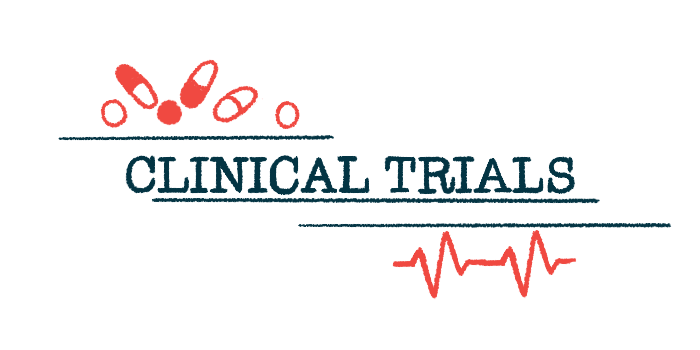DNL343 Well-tolerated by ALS Patients, Interim Data Show
Investigational med recently added to HEALEY ALS Platform Trial

DNL343, an investigational oral small molecule developed by Denali Therapeutics, can extensively enter the brain and reduce the cellular stress response that contributes to amyotrophic lateral sclerosis (ALS) progression.
That’s according to an interim analysis of data from a Phase 1b clinical trial (NCT05006352), in which DNL343 was found to be generally well-tolerated in ALS patients when administered once daily for nearly one month (28 days).
The medication recently was added to the HEALEY ALS Platform Trial, which is testing multiple candidate therapies simultaneously to help speed the development of potential treatments. With these data in hand, the company is now designing DNL343’s Phase 2/3 clinical trial arm of HEALEY.
The HEALEY trial is being led by the Sean M. Healey & AMG Center for ALS at Massachusetts General Hospital (MGH) in collaboration with the Northeast ALS Consortium.
“The data continue to support late-stage development plans for DNL343, and we are excited to be collaborating with the HEALEY ALS Platform Trial team in our unified effort to advance potential treatment options for people living with ALS,” Carole Ho, MD, Denali’s chief medical officer, said in a company press release. These data “are an important milestone for the program,” she said.
The Phase 1b trial results were presented at the 33rd International Symposium on ALS/MND, which was held virtually Dec. 6–9. The poster was titled, “The Integrated Stress Response is modulated by eIF2B agonist DNL343: Results from Preclinical, Phase 1 Healthy Participant, and Interim Phase 1b ALS Patient Studies.”
ALS is caused by the progressive damage and death of motor neurons — the nerve cells in the brain and spinal cord that act on muscle cells to control movement. This means that basic activities that require the use of muscles, such as walking, breathing, speaking, and swallowing, may become difficult or even impossible as the disease progresses.
There currently is no cure for ALS, but there are a handful of approved medications that can help ease its symptoms or slow its progression. There also are a number of experimental medications being tested as potential treatments for ALS.
“ALS is a devastating progressive disorder with very few treatment options,” said Merit Cudkowicz, MD, the principal investigator and sponsor of the HEALEY trial and director of the Sean M. Healey & AMG Center for ALS.
Integrated stress response
While the exact cause of ALS remains unclear, a cellular response to stress called the integrated stress response (ISR) is believed to play a role.
As any other cells, motor neurons switch on the ISR when they are under stress. When this happens, eIF2B, a protein that controls the production of other proteins, stops working, resulting in impaired protein synthesis and the formation of stress granules
In normal circumstances, these granules, which are made of small clumps of proteins and RNA molecules, are disassembled when the original stressor disappears. But these granules are retained in people with ALS, and are thought to precede the buildup of toxic TDP-43 protein clumps, a hallmark of the disease.
DNL343 is designed to turn eIF2B back on, which is expected to restore the production of proteins, break up the TDP-43 clumps, and improve motor neuron survival.
The ongoing Phase 1b trial is evaluating DNL343’s safety in 29 ALS patients, ages 18–80, who experienced their first symptoms less than four years prior to entering the trial. It’s also testing DNL343’s pharmacokinetics (its movement into, through, and out of the body) and pharmacodynamics (its effects in the body).
In the trial, participants are assigned randomly to receive one of two DNL343 doses (high or low) or a placebo, either orally or via a feeding tube, for 28 days. All participants then may enter an open-label extension part and receive the active medication for 1.5 years.
An interim analysis including the first 20 patients who completed the randomized part showed that DNL343’s levels in blood increase in a dose-dependent manner, with the high dose resulting in higher blood levels compared with the low dose.
Crossing the blood-brain barrier
The medication also was found in the cerebrospinal fluid (the liquid that flows around the brain and spinal cord), suggesting it can cross the blood-brain barrier that normally keeps potentially harmful substances out of the brain and spinal cord.
The team collected white blood cells from a subset of patients and found that treatment with DNL343 reduced the levels of ISR markers – ATF4 protein levels and CHAC1 gene expression – in response to stress.
The treatment was deemed well-tolerated, with a similar proportion of participants in the placebo and DNL343 groups experiencing at least one treatment-related side effect (83.3% vs. 85.7%). The most common side effects in the DNL343 group were fatigue and headache.
So far, 19 of the 29 participants in the ALS clinical trial have entered the extension part for a median of 1.8 months.
“Given the strong collective data from the DNL343 program to date, we are looking forward to working with Denali to develop DNL343 for the HEALEY ALS Platform Trial, bringing us closer to our goal of finding more effective treatments for ALS through collaboration,” said Cudkowicz, who also heads MGH’s Department of Neurology and is the Julieanne Dorn professor of neurology at Harvard Medical School.







